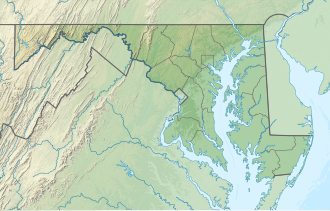History and notable features
This lake was formed in 1944 by the damming of the Youghiogheny River upstream from Confluence, Pennsylvania. [3]
The Youghiogheny Dam is an earthen structure, 184 feet (56 m) high and 1,610 feet (490 m) long at its crest, that is owned and operated by the United States Army Corps of Engineers. [4]
The reservoir's normal surface area is approximately 4.4 square miles (11 km2), and it has a maximum capacity of 300,000 acre-feet (370,000,000 m3), although its normal storage level is 149,300 acre-feet (184,200,000 m3). [4]
The dam facilitates flood control, improves river flow and provides twelve megawatts of hydroelectric power. [1]
U.S. Route 40 crosses the lake between Jockey Hollow on the Fayette County side and Somerfield on the Somerset County side. [5]
Somerfield was laid out on the western edge of Addison Township, Somerset County circa 1816 by Philip D. Smyth, who originally named the settlement Smythfield. [6] Somerfield was abandoned, razed, and inundated when the reservoir was filled during the 1940s.
The stone Great Crossings Bridge of the National Road, which crossed the Youghiogheny at Somerfield, is visible at extremely low water levels. [7] The triple-arch sandstone bridge was constructed between 1815 and 1818 by James Kinkead, James Beck, and Evan Evans. [7] [8]
This page is based on this
Wikipedia article Text is available under the
CC BY-SA 4.0 license; additional terms may apply.
Images, videos and audio are available under their respective licenses.




